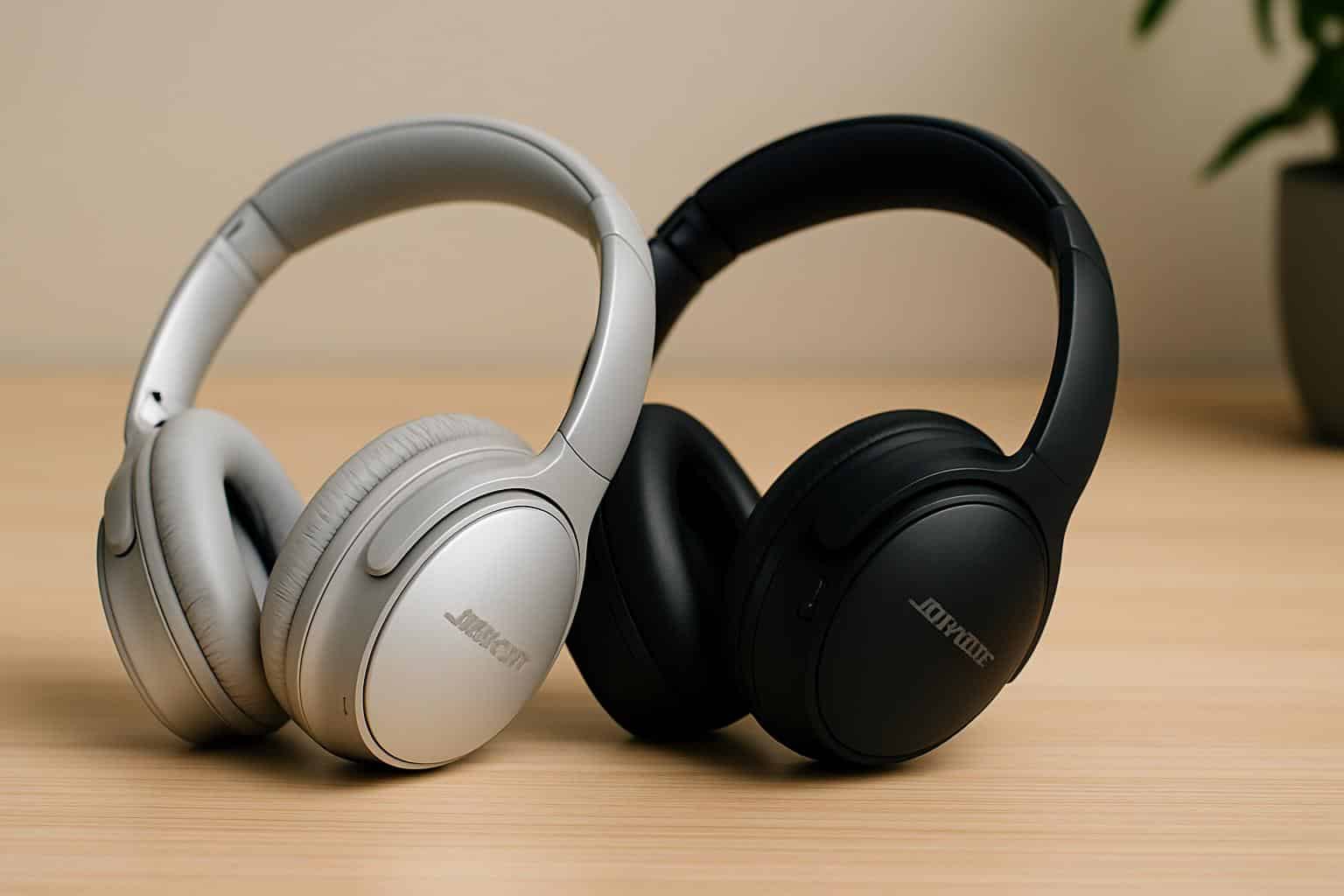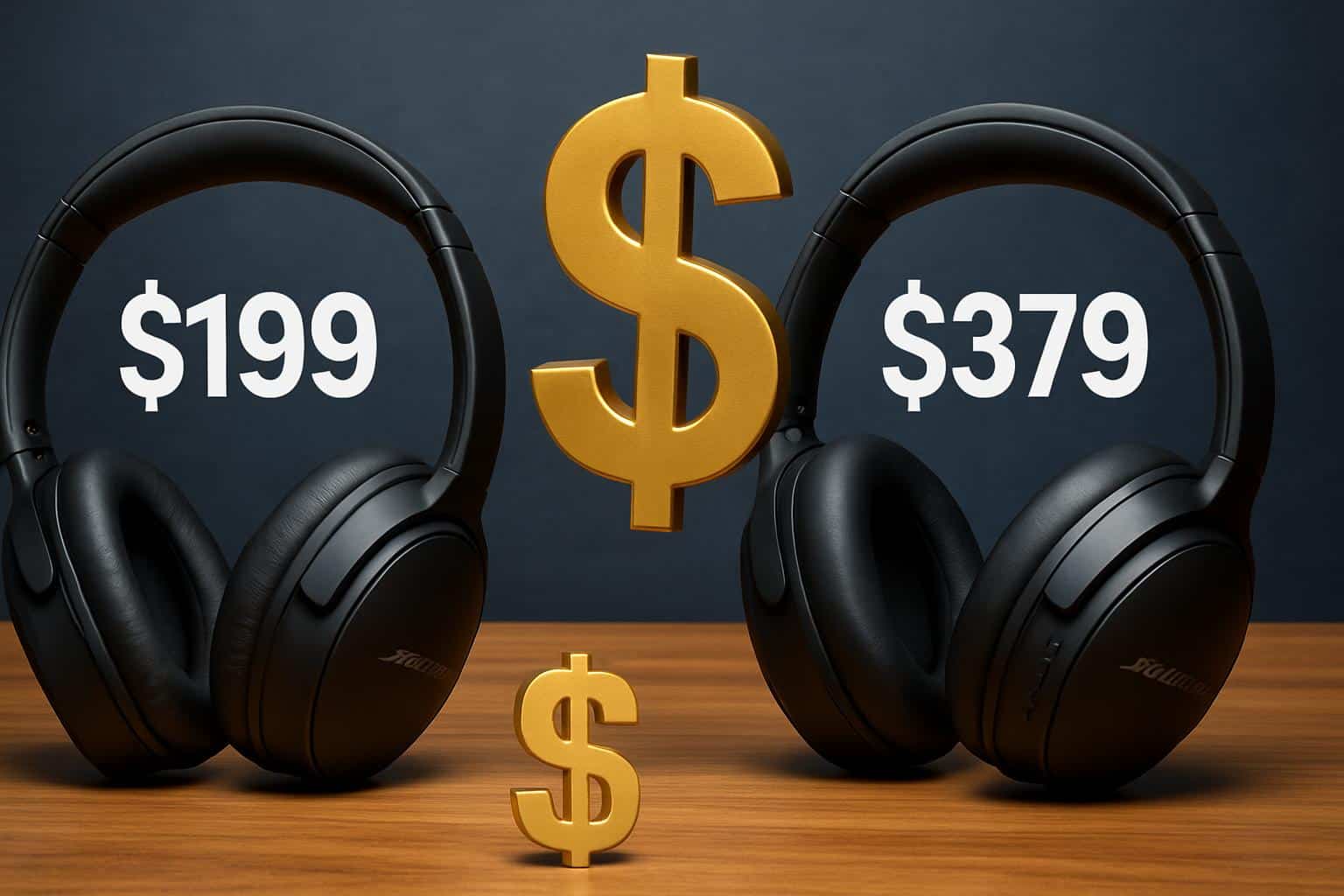Bose’s top‑of‑the‑range QuietComfort Ultra leads with spatial trickery and fancy processing, yet the more pared‑back features of these QuietComfort headphones do the basics so well that, when cheaper on offer (and they often are), they are the smarter buy.
So when those mid‑range cans drop to $199 or less — about half the Ultra price — you’re budgeting for industry‑leading noise cancellation, cushiony comfort, and trustworthy sound without shelling out for features the vast majority of listeners rarely touch, if ever. Bose QuietComfort 45 is the model most shoppers are eyeing.
- Why choosing fewer features delivers better overall value
- Noise cancellation and comfort where it matters most
- Familiar, dependable sound that works for daily listening
- Where the QuietComfort Ultra still leads and adds features
- Battery life and day-to-day use for travel and commuting
- Who should buy the QuietComfort instead of the Ultra model
- Bottom line: the simpler QuietComfort is often the better buy

Why choosing fewer features delivers better overall value
The comparison starts with price. The Ultra tends to run at or near the premium tier, and the QuietComfort typically sells in the $250 range and sometimes dips down to $199 during large sales. It’s that delta that makes the step-up tech something most buyers won’t actually feel day to day. To put it plain: you save well over a hundred dollars and still get the Bose experience that made the company’s name synonymous with travel-friendly silence.
Independent lab test results support the value case. Both models are regularly ranked as two of the best devices for ANC by outlets such as Rtings and Consumer Reports, with minor variance between them in certain frequency ranges. Their attenuation stands at more than 20 dB on both models in the low-frequency “cabin rumble” region, so engines and HVAC are greatly dialed down.
Noise cancellation and comfort where it matters most
Noise cancellation and comfort are more important than gimmicks for long flights or noisy offices. The QuietComforts provide Bose’s signature hush with a soft clamp, loads of padding, and a travel-friendly design that wears well for hours-long stretches. They’re featherlight by over-ear standards — weighing in at around the 240–250 gram mark — so you can forget they’re on your head.
In day-to-day terms, that means you can turn podcasts down rather than up on trains and hear fewer keyboard clacks in an open-plan space. Commuters and frequent flyers often say they experience less listening fatigue, since the headphones are doing more of the heavy lifting and you don’t have to crank up volume as a way to combat noise.
Familiar, dependable sound that works for daily listening
Bose’s tuning is crowd-pleasing on the QuietComfort: a mild bass lift for warmth, present vocals, and smooth treble. It’s not hyper-analytical, but it is genre-allowing and relatively forgiving of streaming bitrates. Basic three-band EQ is built into the Bose Music app — limited flexibility, yes, but also fewer ways to make things sound worse.
Physical buttons make for no-fuss, reliable controls, a plus when you’re gloved up or carrying bags. Multipoint Bluetooth allows you to remain connected to a laptop and phone simultaneously, and the analog cable remains a no-fuss fallback for airplane screens or when you don’t want battery drain from on-the-go work calls.

Where the QuietComfort Ultra still leads and adds features
“The QuietComfort Ultra — the word we were using was ultra because it had extra,” Matalon said. Bose’s Immersive Audio introduces a new spatial listening mode with head tracking, which delivers an even wider and more “out-of-head” presentation for movies and select music. On supported Android phones, the Ultra adds premium wireless transfer rates, including aptX Adaptive via Snapdragon Sound, for more stable and higher-quality sound in busy RF environments.
Call quality gets a boost from more sophisticated mic processing, and USB-C audio support allows the Ultra to act as a basic digital headset for making calls on your laptop or phone without dealing with Bluetooth. If you feel that these are invaluable parts of your life, then the cost is worth it.
Battery life and day-to-day use for travel and commuting
On paper, at least, both promise to last all day. The QuietComfort gets an estimated 24 hours per charge, so it survives a transatlantic flight with room to breathe. Quick-charge capability gets you several hours of playback from just a short top-up — useful when you discover at the last minute that you didn’t charge in advance.
The Ultra has comparable endurance with Immersive Audio turned off; turn it on, and you sacrifice a few hours in exchange for the spatial effect. The QuietComfort’s no-nonsense “charge once, forget it” pattern of use is the precise routine you’re looking for in a pair of travel headphones.
Who should buy the QuietComfort instead of the Ultra model
If your checklist includes quietude, comfort, dependable sound, and a reasonable price, then QuietComfort is the smart way to go — especially for $199. Students, commuters, and frequent travelers may find that there’s simply not much difference in core performance between this and the Ultra, and the money they save can be spent on a streaming upgrade or a backup set of earbuds.
Audiophiles in search of a spatial effect, creators who require USB-C audio, or Android users seizing on aptX Adaptive might still want the Ultra. But for the great majority of us, that simpler model nails the basics and saves you some cash.
Bottom line: the simpler QuietComfort is often the better buy
Flagship features are catchy headlines, but great headphones make a living where it’s loudest and longest. Bose QuietComfort headphones offer world-class noise reduction, plush comfort, and solid sound — a rare instance when the simpler option is actually the better buy.

